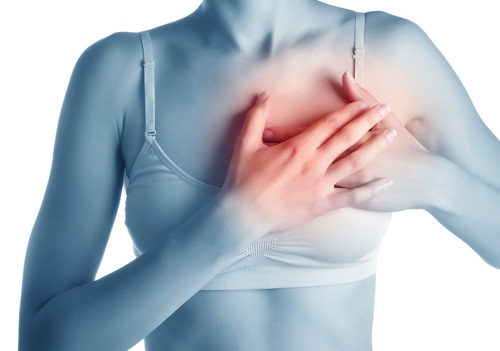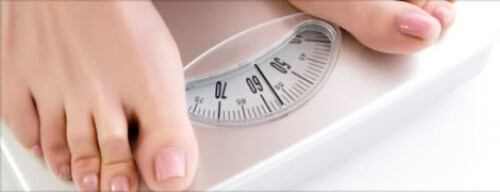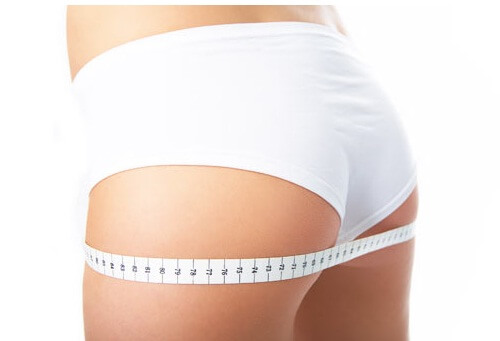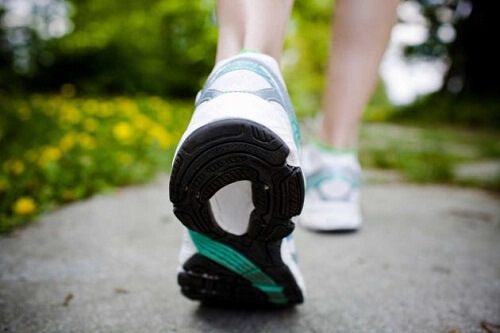많은 사람들이 걷기의 효능을 인지하지 못하고 있다. 걷기는 매일 하기에 제일 좋은 운동인데 그것을 모르고 있거나, 알더라도 일상생활에서 실천하지 않는다. 전혀 걷지 않는 성인이 40%나 된다는 것이 어느 연구에서 밝혀졌다. 기술의 발전으로 일상이 편리해졌지만, 몸은 건강하지는 않다.
걷기는 제일 좋은 운동이다. 근육을 움직이고 칼로리를 소모하는 간단한 방법이다. 더 자주 걷거나 점점 더 빠르게 걷는다면 효과는 배가 된다. 매일 같은 길을, 같은 시간 동안 걷는 것만으로 충분하지 않다. 하루에 최소한 30분, 별 다른 생각 하지 않으면서 점점 더 빠르게 걸어야 효과를 볼 수 있다.
이 글에서는 하루 30분 걷기의 효능에 대해 좀 더 알아보려고 한다.
더 읽어보자: 뇌 단련 운동 베스트 8
심장 건강을 개선하고, 심혈관 질환을 예방한다

하루에 최소한 30분을 걸으면 심장 관련 질병과 뇌졸중에 걸릴 위험이 27%까지 낮아진다. 혈압을 조절하고, 혈액순환이 잘 되게 하며 나쁜 콜레스테롤을 감소시킨다. 또 건강한 콜레스테롤은 늘어난다. 심박수가 커지면, 심장 건강이 향상된다.
병에 걸릴 위험이 낮아진다
하루에 최소한 30분 이상 걷는 사람들은 제2형 당뇨병이나 천식, 암에 걸릴 위험이 낮아진다는 것이 여러 연구에서 입증된 바 있다. 매일 운동을 하는 사람들은 대장, 유방, 자궁 암에 걸릴 위험이 낮아진다고 한다.
적정 체중을 유지하는 데 도움이 된다

적당한 속도로 매일 걸으면 신진대사 속도를 높이는 데 도움이 된다. 그리고 이는 지방 소모로 이어진다. 더 빨리 걸으면 칼로리가 더 많이 소모된다. 걷기는 적정 체중을 유지하고, 나아가 근육양을 늘리고 몸매를 이쁘게 하는 데 좋은 운동이다.
더 읽어보자: 느린 신진대사를 신장시키는 9가지 팁
골다공증을 예방한다
매일 걷기는 뼈를 건강하게 하고, 골밀도를 높이는 데 도움이 된다. 특히 여성들이 하면 좋은 운동으로서 관절 건강에도 좋고, 관절염도 예방할 수 있다.
다리, 엉덩이, 복부를 탄탄하게 만든다

바른 자세로 매일 30분씩 걸으면 다리를 튼튼하게 하는 데 도움이 된다. 또 근육을 만들고 몸을 탄력 있게 만드는 데도 도움이 된다. 엉덩이를 탄력있게 해주고, 처지지 않게 하는 데도 좋다. 복부 지방을 소모시켜주며, 복부를 탄탄하게 만들 수 있다.
치매를 예방한다
65세 이상 14명 중에 1명, 80세 이상 6명 중에 1명은 치매라고 한다. 하루에 30분 정도 걸으면 뇌 세포가 없어지는 것을 예방할 수 있고, 기억력도 지킬 수 있다. 운동을 하면 뇌 세포를 활성화하고, 보호한다. 치매에 걸릴 위험을 40% 까지 낮출 수 있다.
에너지를 키운다
우리가 걸을 때에는 온몸이 움직인다. 혈액순환도 잘 되고, 산소가 몸 전체 세포에 공급된다. 그래서 건강한 생활 습관을 유지하면, 마치 낮이나 점심 식사 후 처럼 더 활력있게 지낼 수 있다.
우울증이 생기지 않는다

걷기는 우울증에 좋고, 우울증 관련 증상을 완화시키는 데 효과가 있다는 것이 밝혀졌다. 하루에 30분 걷는 동안 개인적인 공간이 생기고, 우울증이 생기는 것을 미리부터 예방할 수 있다.
비만을 예방하고 셀룰라이트가 감소된다
걷기는 대사시키는 것 뿐만 아니라 독소를 배출하고, 지방을 소모시키는 데 도움이 된다. 비만을 예방할 수 있다. 지방을 태우는 것 뿐만 아니라 체액저류도 예방할 수 있고, 혈액순환에도 좋다. 셀룰라이트가 생기는 것을 막는다.
성생활이 향상된다
운동과 성생활은 밀접하게 연관되어 있다. 최근의 연구는 45세 에서 55세 사이의 여성 중, 매일 걷기를 하는 사람들은 성 욕구와 만족이 증가된다고 설명했다.
참고 문헌
모든 인용된 출처는 품질, 신뢰성, 관련성 및 유효성을 보장하기 위해 저희 팀이 철저히 검토했습니다. 이 글의 참고 문헌은 신뢰할 수 있으며 학문적 또는 과학적 정확성을 갖춘 것으로 간주되었습니다.
- Caminar a paso rápido de forma regular reduce hasta un 11% el riesgo cardiovascular. (2018). Fundación Española del Corazón. https://fundaciondelcorazon.com/prensa/notas-de-prensa/2604-caminar-a-paso-rapido-de-forma-regular-reduce-hasta-un11-riesgo-cardiovascular.html#:~:text=Concretamente%2C%20caminar%20es%20uno%20de,prevenci%C3%B3n%20de%20las%20enfermedades%20cardiovasculares.
- Caminar: ¿es suficiente para bajar de peso? (2022). Mayo Clinic. https://www.mayoclinic.org/es/healthy-lifestyle/weight-loss/expert-answers/walking/faq-20058345
- Caminar: reduce la cintura y mejora tu salud. (2019). Mayo Clinic. https://www.mayoclinic.org/es/healthy-lifestyle/fitness/in-depth/walking/art-20046261
- Da Silveira, M. P., da Silva Fagundes, K. K., Bizuti, M. R., Starck, É., Rossi, R. C., & de Resende E Silva, D. T. (2021). Physical exercise as a tool to help the immune system against COVID-19: an integrative review of the current literature. Clinical and experimental medicine, 21(1), 15–28. https://www.ncbi.nlm.nih.gov/pmc/articles/PMC7387807/
- Dunlop, D. D., Song, J., Hootman, J., Nevitt, M. C., Semanik, P. A., Lee, J. H., Sharma, L., Eaton, C. B., Hochberg, M. C., Jackson, R. D., Kwoh, C. K., & Chang, R. W. (2019). One hour a week: Moving to prevent disability in adults with lower extremity joint symptoms. American Journal of Preventive Medicine, 56(5), 664-672. https://doi.org/10.1016/j.amepre.2018.12.017
- Edwards, M. K., & Loprinzi, P. D. (2018). Experimental effects of brief, single bouts of walking and meditation on mood profile in young adults. Health promotion perspectives, 8(3), 171–178. https://www.ncbi.nlm.nih.gov/pmc/articles/PMC6064756/
- Göçer, E., Ardıç, F., Akkaya, N., & Herek, D. (2017). Efficacy of moderate-intensity walking provided feedback by ECE PEDO on abdominal fat in overweight and obese women: A randomized, exercise study. Turkish journal of physical medicine and rehabilitation, 63(4), 340–347. https://www.ncbi.nlm.nih.gov/pmc/articles/PMC6648078/
- Guglielmo, D., Murphy, L. B., Theis, K. A., Boring, M. A., Helmick, C. G., Watson, K. B., Duca, L. M., Odom, E. L., Liu, Y., & Croft, J. B. (2021). Walking and Other Common Physical Activities Among Adults with Arthritis – United States, 2019. MMWR. Morbidity and mortality weekly report, 70(40), 1408–1414. https://www.ncbi.nlm.nih.gov/pmc/articles/PMC8519272/
- Hamaguchi, T., Tayama, J., Suzuki, M., Nakaya, N., Takizawa, H., Koizumi, K., Amano, Y., Kanazawa, M., & Fukudo, S. (2020). The effects of locomotor activity on gastrointestinal symptoms of irritable bowel syndrome among younger people: An observational study. PloS one, 15(5), e0234089. https://www.ncbi.nlm.nih.gov/pmc/articles/PMC7259724/
- Harvard Health. (2023). Improve your balance by walking. https://www.health.harvard.edu/staying-healthy/improve-your-balance-by-walking
- Is walking good for varicose veins?. (s. f.). Vascular & interventional associates: Board certified vein and vascular specialists. https://www.viaveincenter.com/blog/is-walking-good-for-varicose-veins
- Iwasaki, M., Kudo, A., Asahi, K., Machii, N., Iseki, K., Satoh, H., Moriyama, T., Yamagata, K., Tsuruya, K., Fujimoto, S., Narita, I., Konta, T., Kondo, M., Shibagaki, Y., Kasahara, M., Watanabe, T., & Shimabukuro, M. (2021). Fast walking is a preventive factor against new-onset diabetes mellitus in a large cohort from a Japanese general population. Scientific Reports, 11(1). https://doi.org/10.1038/s41598-020-80572-y
- Jones, R. (2022). Does walking build muscle? livescience.com. https://www.livescience.com/does-walking-build-muscle
- Lan, Y. S., & Feng, Y. J. (2022). The volume of brisk walking is the key determinant of BMD improvement in premenopausal women. PloS one, 17(3), e0265250. https://www.ncbi.nlm.nih.gov/pmc/articles/PMC8926180/
- Levine, J. A. (2007). Exercise: a walk in the park? Mayo Clinic Proceedings, 82(7), 797-798. https://www.mayoclinicproceedings.org/article/S0025-6196(11)61301-3/fulltext
- Nagai, M., Kuriyama, S., Kakizaki, M., Ohmori-Matsuda, K., Sone, T., Hozawa, A., Kawado, M., Hashimoto, S., & Tsuji, I. (2011). Impact of walking on life expectancy and lifetime medical expenditure: the Ohsaki Cohort study. BMJ Open, 1(2). https://doi.org/10.1136/bmjopen-2011-000240
- Omura, J. D., Ussery, E. N., Loustalot, F., Fulton, J. E., & Carlson, S. A. (2019). Walking as an Opportunity for Cardiovascular Disease Prevention. Preventing chronic disease, 16, E66. https://www.ncbi.nlm.nih.gov/pmc/articles/PMC6549420
- Oppezzo, M., & Schwartz, D. L. (2014). Give your ideas some legs: the positive effect of walking on creative thinking. Journal of experimental psychology. Learning, memory, and cognition, 40(4), 1142–1152. https://doi.org/10.1037/a0036577
- Paluch, A. E., Gabriel, K. P., Fulton, J. E., Lewis, C. E., Schreiner, P. J., Sternfeld, B., Sidney, S., Siddique, J., Whitaker, K. M., & Carnethon, M. R. (2021). Steps per Day and All-Cause Mortality in Middle-aged Adults in the Coronary Artery Risk Development in Young Adults study. JAMA network open, 4(9), e2124516. https://doi.org/10.1001/jamanetworkopen.2021.24516
- Wang, F., & Boros, S. (2020). The effect of daily walking exercise on sleep quality in healthy young adults. Sport Sciences for Health, 17(2), 393-401. https://link.springer.com/article/10.1007/s11332-020-00702-x
- Won, J., Nielson, K. A., & Smith, J. C. (2023). Large-Scale network connectivity and cognitive function changes after exercise training in older adults with intact cognition and mild cognitive impairment. Journal of Alzheimer’s disease reports, 7(1), 399-413. https://doi.org/10.3233/adr-220062

